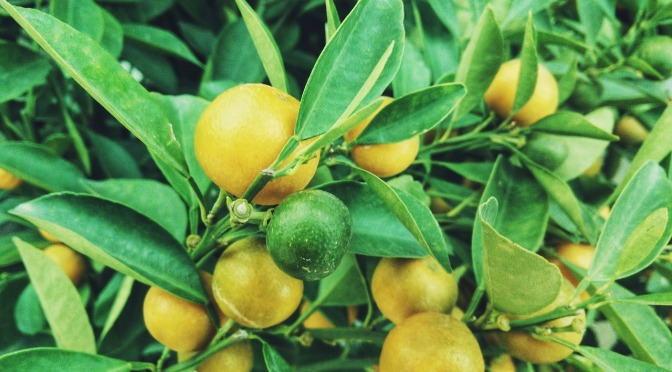Recently I have been asked why some plants (and in particular citrus trees) are loosing leaves and look like dying?
The problem is root roots and any plants, shrubs or trees that can not have their roots wet for any length of time will likely die unless some remedial action is taken during wet times..
In a few cases I have been told that a citrus tree has been happy where it is for several years and now suddenly it is suffering.
The reason is likely a change in the flow of rain water which has made the root zone much wetter than in the past.
Maybe a shed was build nearby, maybe a concrete path or drive was laid which has changed the course of water and made an area wetter that in the past.
We will talk about citrus though there are a number of other plants which are not happy with wet feet.
Citrus need to be planted on very free draining soil and one way to ensure this is to make a mound of soil about 30cm tall and plant into the mound.
One of the locations I used to live at was so wet in winter that it was a lake a foot deep .
Initially I planted in the back yard some specimens that would take up the excessive water one of which was a twisted willow.
To grow my citrus trees I cut 200 litre plastic drums in half and made some large drainage holes in the base and on the sides near the base.
I then partly buried the container into the soil.
This was to help stabilize the tree in wind so they did not blow over.
Well what happened is the roots found their way out through the holes in the bottom/sides and the citrus really took off.
In winter they were sitting in a lake of water happy as Larry with a good part of their root system above the water.
This could be a method you could use if you have a very wet section.
There is another advantage to this and that is if you move house you can with a bit of effort dig the drums out of the soil cut the extended roots and take them with you to the next location.
I have citrus than have now lived in three different locations.
With the amount of rain in many locations there could be a chance your citrus are suffering so best to check.
Yellow leaves and leaf drop are a good indication it might be wet under foot.
There is an easy way to help over come the wet and allow the soil to dry out quicker.
Take a spade and just beyond the drip line and dig a trench about one and a half spades deep.
This allows the water to flow into the ditch and quickly evaporate with sun and wind.
A big problem this time of the year is mulches over gardens and around plants.
Mulches are for keeping moisture trapped in the dry times.
In wet times they are deadly.
So if you have bark gardens, weedmat or other covers over the soil for moisture retention you need to keep an eye on the plants growing there.
If they are starting to look poorly then you may be best to remove the mulch and let the soil breathe.
You can help speed up the recovery of any plants suffering from wet feet by spraying the foliage with Perkfection at the 7 mil rate.
A month later at the 5 mil rate this will help the plant generate new roots and overcome root rots.
Winter time is also a hard time for indoor plants and losses can occur if the growing medium is too wet.
House plants do not need much water at this time and if they are sitting in a saucer that is full of water you may have a problem.
There is a simple test you can use to determine how wet or dry a container plant is.
Lift the container and if it feels very light then it needs a small drink.
If heavy forget it and check a week later.
There can be a problem also where the mix has become so dry that when you water it does not wet the mix but flows out the drainage holes.
The plant gets only a little drink but not enough.
To overcome this add some dish washing liquid to a container of warm water and water the soapy mix over the growing medium.
This breaks the surface tension and allows the soapy water to penetrate.
Next time you water the water will stay there and not run out.
Another way of doing this in summer (not now) is to plunge the container into a tub of water and watch it bubble.
When it stops bubbling it is soaked thoroughly and you lift to drain.
Watering is an art which takes a lot of thought to get it right all the time.
EARLY BIRD LAST DAYS
Problems ring me at 0800 466464
Email wallyjr@gardenews.co.nz
Web site www.gardenews.co.nz
Phone 0800 466464
Garden Pages and News at www.gardenews.co.nz
Shar Pei pages at www.sharpei.co.nz
Mail Order products at www.0800466464.co.nz


